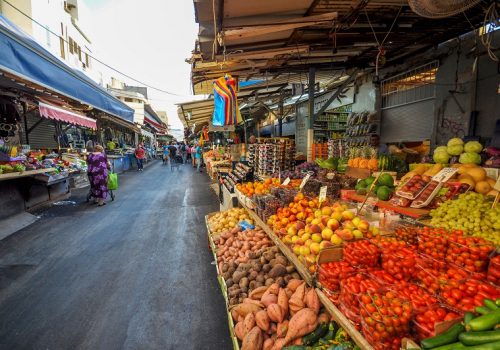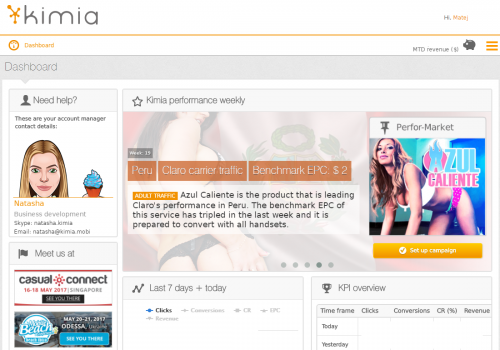Every traffic network out there has both good and bad publishers in their portfolio. Publishers are guys/companies who run sites or apps, that they sell ad spots on. That’s how we, the affiliates, can buy traffic from them. The problem is, not every publisher is a honest person, some are flat out assholes who code BOTs and sell them to us, scamming us for money and wasting our time.
Unfortunately, we cannot count on the traffic networks to solve the problem completely, because even in case of BOT traffic, they still make their commission. That’s why many networks turn a blind eye to this problem …
On top of that, some cheaters are pretty good coders, so detecting advanced BOTs is not so easy. So even the honest networks have a problem catching all the crap. One way or another, pretty much any traffic source at least offers the option to pause/block specific placements that are not performing for us and/or use Blacklists or Whitelists. A placement can be a site, app or a specific ad spot, depending on the network and traffic type.
But there can be many reasons for blocking a placement, not just BOT traffic … just as there are many reasons for targeting particular placements only. In this article, I will explain what White and Black lists are, why and how to use them, whether one is better than the other and why that is the case…
SO, WHAT IS A BLACK AND WHITE LIST?

You have basically two options when targeting and optimizing placements:
1. Target all the placements that are available and block the ones that are not performing for you from one reason or another. Blocking the placements is actually the process of creating a BLACKLIST. Usually, you start with this option, when testing a new source or campaign/offer.
2. Target only a specific set of placements, or even a single placement. The chosen placement are actually representing the WHITELIST. You can only build a whitelist when you know something about the traffic source you are working with. You can use your past data and pick the best performing placements, or you can acquire this whitelist from someone else … one way or another, you cannot just “blindly” create it, it has to be based on some data.
LET’S TAKE A CLOSER LOOK AT THE BLACKLIST OPTION FIRST.
You will see two ways of handling the blocking of placements – there will either be a list of placements with some “checkbox” next to their name that you can tick, in order to block that placement. Or you will have to enter the ID’s of placements into some box one by one and then submit that form. The functionality is the same, one is just more complicated than the other one.
You need to set some rules for what placement should be blacklisted. Here are a few ideas:
– BOTs … any placement with a very high % of bots should be blacklisted. It’s true that even placements with a lot of bots can still be profitable, but once the % reaches 70% or 80%, the chances are really tiny.
– Very LOW or very HIGH CTR on Landing Pages … both cases signal some problem with the traffic, very low CTR means too expensive LP clicks, very high CTR signals possible BOT placement.
– Poor Performance … not every placement can work with every offer. In case you don’t see a conversion from a placement after certain amount has been spent on it, block that placement. Most experienced affiliates recommend 2-3 x the offer payout. I personally cut even sooner in some cases.
– Very Poor or Very High Win-Rates … In case of traffic sources that show the winrate per placement, you don’t want to bid on placements that are giving you either very low or very high winrates. Low winrates mean that your bid is too low and you’re most likely buying the crappy leftover traffic. A very high winrate signals that your bid is too high now and you’re getting too large share of the rotation. What you need to do here, is target these placements in separate campaigns and adjust bidding levels – more on this later on.
WHITELISTS NOW, HOW TO BUILD AND HANDLE THEM?

Whitelist is basically the opposite of a Blacklist, so instead of blocking placements, you are now telling the source what particular placements you want to buy traffic from. In this case, you can either browse the available placements and choose the ones to target, or you can submit the IDs again … it all works in a similar way as with the blacklist.
There are many reasons for building whitelist campaigns, let me give you some examples:
– Limited Blacklist Size … in some sources, you can’t just blacklist as many placements as you want to. A good example would be ExoClick, which is a massive adult traffic source. The maximum amount of placements you can block there is 999. But, they have several 10s thousands of placements, and you bet that more than a 1000 are crappy 🙂
The only way around is to select only sites that you have had good results with – in other words, creating a whitelist.
– Cluttered Bidding Landscape … this is related to the winrate % problem I already mentioned above. With some sources, the bids are very different on various placements. In case they offer Smart CPM bidding, you can partially handle it within one campaign, but it’s often better to take out the more expensive placements and target them in separate campaigns.
This way, you can bid more on them, without overpaying on the less expensive placements. You will also be able to better optimize the particular campaigns, reach the desired winrate % and get more quality traffic for a reasonable bid.
– Getting The Most From Some Placements … sometimes, there are placements that are just killing it and you want all traffic from them. In this case, you can create several cloned whitelist campaigns that all target the same set of placements, use staggered bids and dominate them.
– Categorized Placements … When promoting niche offers that appeal to a specific audience, you also need specific placements that are on sites/apps related to your niche. This is a common tactic with native traffic sources, many of them will even provide you with a whitelist that caters to certain interests.
WHAT SHOULD I BE USING, WHITE OR BLACK LISTS?

As always, there are both pros and cons to either approach. Let’s take a look at some of them together.
– Traffic sources prefer Blacklists but not too big ones. The reason is simple, when you block too many placements, they can’t sell you traffic from the other ones. Same situation happens when you do whitelist campaigns only, you are basically cherry picking the best traffic, leaving the crap to them.
The goal of any traffic source is to sell ALL the traffic they have available, including the crap 🙂 So, naturally they prefer buyers who don’t optimize too much. That’s why many algos simply distribute more traffic to less optimized campaigns. Many affiliates reported sudden campaign deaths with too much blacklisted placements.
This means, that in order to get the most volume possible, focus on blacklisting just the WORST crap, do not over-do it. Keep in mind that once you block a placements, all traffic from it is gone, try to optimize other things before blocking it for good.
– In some cases, you have no other choice but to use a Whitelist, for example in case of the winrate % problem or specific niche products. If you do this, prepare to pay higher CPM or CPC bids, your picking the BEST traffic for your campaigns, so make sure your bid reflects it.
If you want traffic from specific placements, you simply have to pay more than the people who target all placements.
– Both a Whitelist and Blacklist are transferable from one campaign to the next to some extent. In other words, if you compiled a whitelist by running some offer, chances are that the same placements will work well with another similar offer.
Same goes for the blacklist, if the placements really sucked before, they won’t improve overnight. However, I personally find whitelists to be more universal than blacklists. A better offer can turn a loosing placement into a profitable one, so it’s not a good idea to blacklist every single placement that didn’t work well with your past campaigns.
Starting with a proven whitelist on the other hand, is a very good starting point for any new campaign, at least you know that you are buying real traffic that was already proven to convert.
SUMMARY TIME AGAIN 🙂
Both whitelists and blacklists are an important tool for anyone working with paid traffic. Each of them can really help you when utilized properly. As always, it’s not wise to over-do things, so don’t blacklist everything just like that, set your own rules for what defines a placement to put on a blacklist.
Keep in mind that traffic sources prefer less optimized campaigns and will reward them with more volume again. Stick to reasonable blacklisting for maximum volume and utilize whitelists to “exploit and dominate” the best placements or to achieve most effective bidding.
Consider using past black/white lists for future campaigns, crappy placements won’t improve magically, so you might as well block them in your future campaigns. And obviously, already proven placements should also perform decently in the future so stat by targeting them!
Thanks for reading 🙂
[grwebform url=”https://app.getresponse.com/view_webform_v2.js?u=Sym6E&webforms_id=8162402″ css=”on” center=”off” center_margin=”200″/]







6 comments
As for whitelisting: do good targets also perform well in other verticals and geos?
It doesn’t have to be the case, but chances are, a good placement will have solid traffic in any GEO. As for verticals, in case we are talking about broad appeal offers, it’s quite common to see the same placements working well with a range of offers.
You still don’t talk about how to filter bot traffic 🙁
I do now, here it is just for you : http://www.matuloo.com/bot-traffic-how-to-detect-fake-hits-and-what-to-do-about-it/ 🙂
Hey Matuloo. SaigonScott from stm. You explain things very clearly and it’s easy to follow. This post helped us reach our first green campaign (in addition to other posts from you). Thanks a mill and keep rockin!
I’m glad I could help you man! I noticed many of your posts on STM Forum too, keep going 🙂